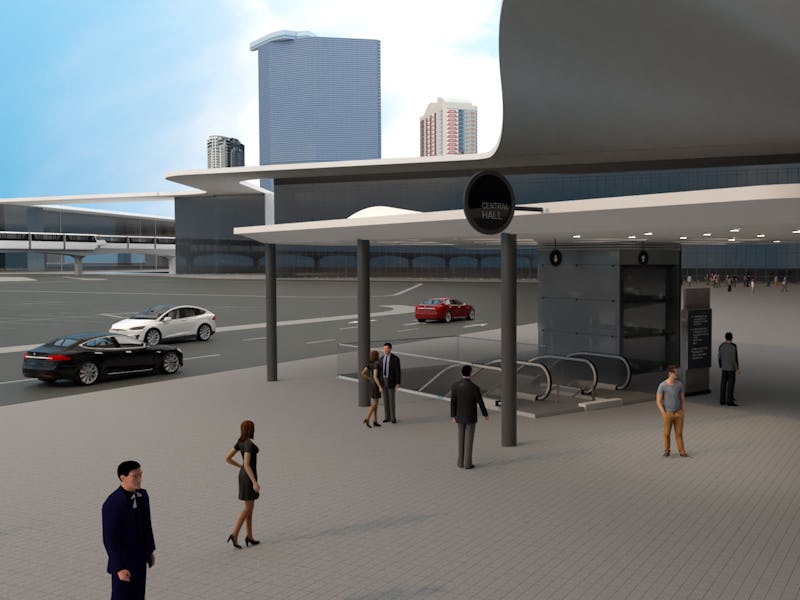The Boring Company: here’s what comes next after Las Vegas milestone
The Boring Company's first tunnel, a connection for the Las Vegas Convention Center, is almost ready. Here's what comes next.

The Boring Company has completed the tunnel-digging process for its first public project, and it has big plans for the future.
The tunnel construction company, first founded by Elon Musk at the start of 2017 to provide more capacity for city transportation, finished digging the second of two tunnels at the Las Vegas Convention Center on Thursday. The planned bi-directional connection stretches over 4,500 feet, covers three stations, and enables center attendees to traverse the complex in all-electric Tesla vehicles in just under two minutes.
Hours after the breakthrough, Musk teased on his Twitter page that there is more to come:
"Boring Co will also connect Vegas hotels & airport. Autonomous Teslas in tunnels will provide individualized mass transit."
The tunnel ahead of expected breakthrough.
The completion of the second tunnel is a big step forward for the project, which could demonstrate to other cities that The Boring Company is a viable option for transportation solutions. Musk founded the company after declaring in December 2016 that he was sick of Los Angeles traffic, with the goal of building tunnels to add more capacity to a city.
Musk later claimed he could avoid issues of induced demand by digging multiple layers of tunnels, enough to transport entire cities. Reducing the cost of tunnel digging would help make this a more affordable option. The company has also floated the idea of using the tunnels to support hyperloop, the 700 mph vacuum-sealed pod transit system designed by Musk.
The firm unveiled its first test tunnel, a 1.14-mile system in Hawthorne, California, in December 2018. It consisted of a Tesla Model X moving through the tunnel autonomously, using guide wheels on the front sides to navigate the slim tunnels. Using an autonomous, electric car means the tunnels can be built to a diameter of just 14 feet, Musk explained, rather than the 28 feet seen on other tracks. The original track cost just $10 million to build, around 10 times less than what the company claims a city would pay for a new tunnel per mile.
As The Boring Company wraps up digging on the Las Vegas project, where's what comes next.
First steps: finishing the tunnel
While digging for the tunnel has been completed, there's still plenty of work left to be done. A spokesperson for the Las Vegas Convention and Visitors Authority, the group that manages the center, told Inverse this week that the next phases will involve completing excavation for the three passenger stations. The goal will then be to pave the first tunnel.
Concept art of the planned tunnel station.
The overall plan is to finish construction and open the tunnel by January 2021. The project may be completed before then – when asked on Twitter Friday if the project was still on track for completion before the end of 2020, Musk replied: "probably sooner."
Musk's Twitter post.
From there, the team will be able to start offering rides for the annual Consumer Electrics Show next year. Whether the plans for the show will have to be altered with the coronavirus pandemic remains to be seen. If it goes ahead as normal, it could be a very public demonstration of Musk's new tunnel that gives a hands-on to technology journalists.
Later steps: future expansion
Completion of the tunnel won't spell the end of the project. Musk suggested this week that the tunnel will connect the hotels in Las Vegas, as well as the airports.
Musk's declaration.
This is not a new suggestion. When the project was first announced in March 2019, the authority released a map that included "conceptual future expansion," demonstrating how the tunnels could be extended far beyond their initial mile:
The planned expansion, as outlined in March 2019.
The first phase of the project cost $52.5 million and helped connect the existing convention center with the new West Hall. But based on the proposals above, The Boring Company may just be getting started.
This article was originally published on